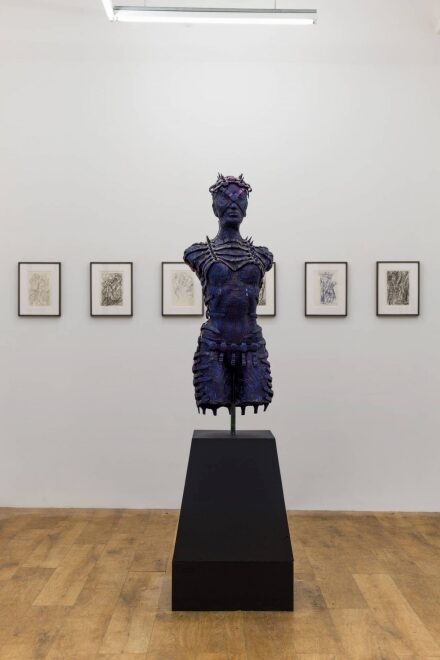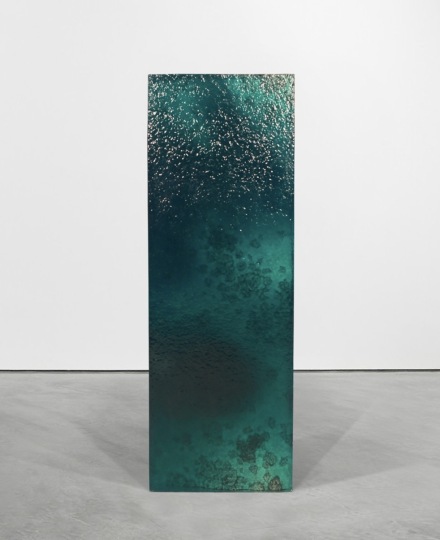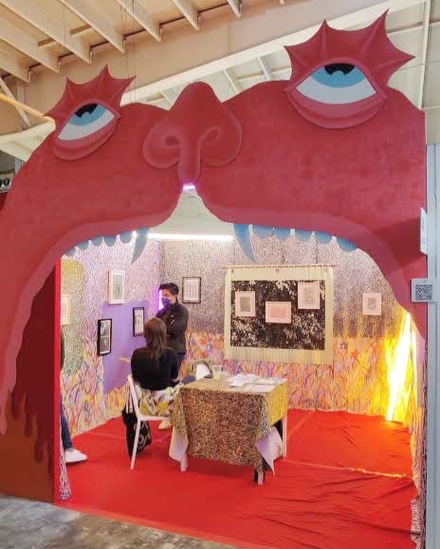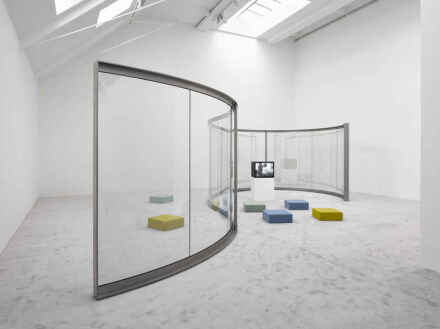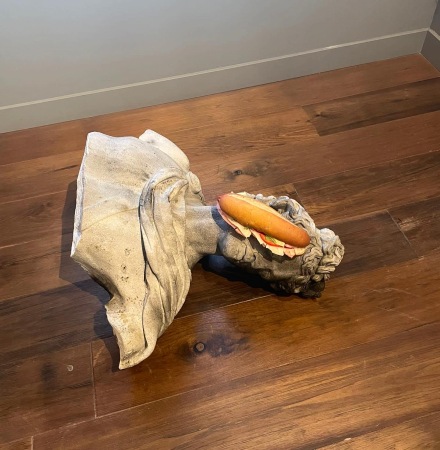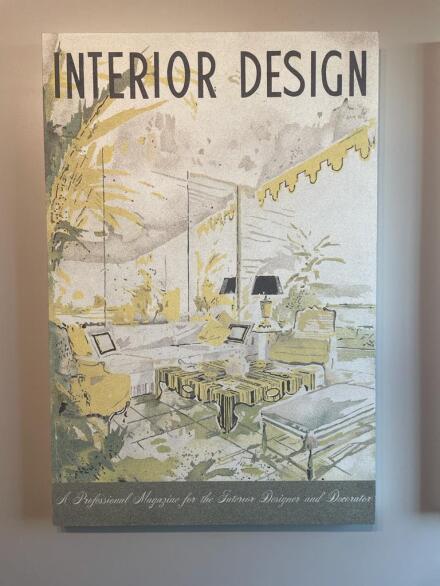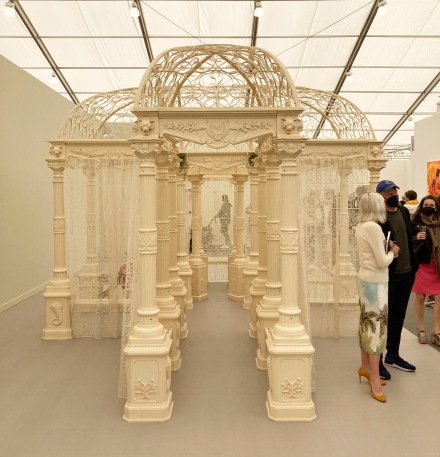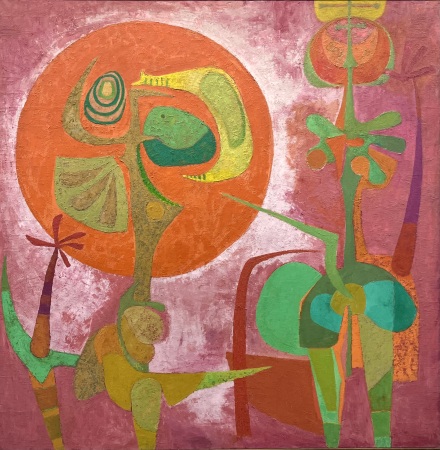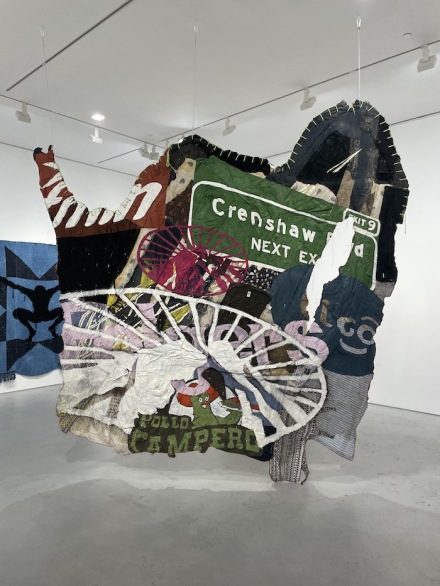
Eddie R. Aparicio, Holbein En Crenshaw (Washington Blvd. and Crenshaw Blvd., LA, CA) (2018), all images via Aidan Chisholm for Art Observed
Hauser & Wirth presents “The New Bend,” a group exhibition exploring the intergenerational legacy of quilting as a gendered, raced and classed mode of social practice. Curated by Legacy Russell, Executive Director & Chief Curator of The Kitchen, the exhibition brings together twelve contemporary artists engaging with the Gee’s Bend Alabama quilting tradition: Anthony Akinbola, Eddie R. Aparicio, Dawn Williams Boyd, Diedrick Brackens, Tuesday Smillie, Tomashi Jackson, Genesis Jerez, Basil Kincaid, Eric N. Mack, Sojourner Truth Parsons, Qualeasha Wood, and Zadie Xa.
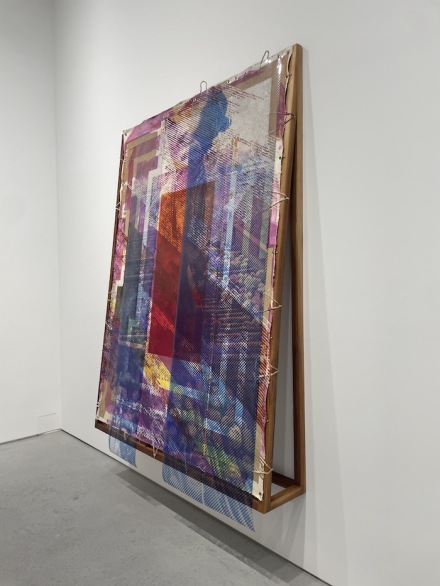
Tomashi Jackson, Among Fruits (Big Shane and the Farmer) (2021)
The New Bend renders apparent the enduring influence of the Gee’s Bend quilters, underscoring the weighty historical role of Black American women including Sarah Benning (b. 1933), Missouri Pettway (1902-1981), Lizzie Major (1922-2011), Sally Bennett Jones (1944-1988) and Mary Lee Bendolph (b.1935). Rooted in the hamlet of Gee’s Bend along the Alabama River in Wilcox County, this textile tradition extends from the 19th and 20th centuries to the present era, with contemporary artists mining the visual rhetoric and technical framework of quilting, while paying homage to the collective ethos of the communal practice. “The New Bend” highlights contemporary engagement with the Gee’s Bend legacy to posit the centrality of this tradition within Modernist art historical narratives of abstraction.
Coinciding with the 20th anniversary of the pivotal exhibition “The Quilts at Gee’s Bend” at The Whitney Museum of Art (2002-2003), “The New Bend” attests to the continued relevance of this textile practice in the context of twenty-first-century digitization. Russell evokes the rhetoric of digitization and computation to understand the cooperative networks enacted through quilt-making today, in this era of the Web 2.0 marked by the proliferation of participatory platforms within the decentralized internet domain. “The New Bend” does not position textile art as a reversion to the handmade in our digital era, but rather harnesses the rhetoric of computation and coding to appreciate the layered dynamics of quilting as simultaneously personal and communal, conjuring collective memories while perhaps envisioning alternate futures. In Qualeasha Wood’s work, the artist reflects upon the dynamics of surveillance and control within non-neutral digital infrastructures to explore the polemics of hypervisibility of Black female subjectivities.Ctrl+Alt+Del (2021), views the dynamics of surveillance and control within non-neutral digital infrastructures to explore the polemics of hypervisibility of Black female subjectivities.
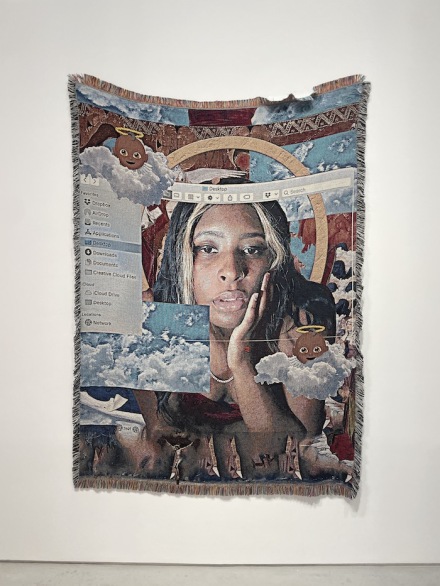
Qualeasha Wood, Ctrl+Alt+Del (2021)
The gallery statement underscores the legacy of Gee’s Bend extending beyond art historical discourse: “What the quilters of Gee’s Bend reveal via their transformative cooperative work is that they are both artists and technologists, contributing simultaneously to art history, as well as to science, technology, engineering, and mathematics (STEM) practice. This duality exists in the work of each artist featured in this exhibition and many more beyond who continue to grow in this tradition.”
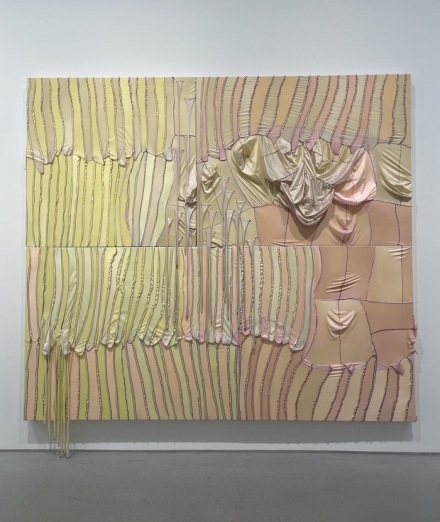
Anthony Akinbola, Jubilee (2021)
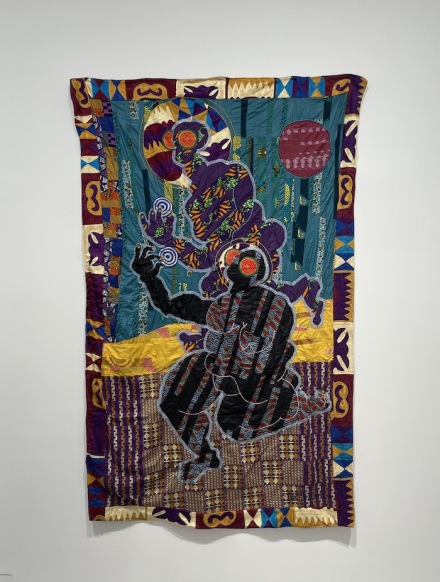
Basil Kincaid, Four Eyes One Vision (2021)
Entering the intimate, second-floor space of the Chelsea gallery, viewers encounter Dawn Williams Boyd’s The Right to (My) Life (2017), a mixed media tapestry capturing an anti-abortion rally. This vibrant figurative work situates textile art as a mode of political intervention, conjuring the legacy of quilting as a mode of political conscious-raising amidst the Civil Rights Movement, particularly following the emergence of The Freedom Quilting Bee in Rehoboth, Alabama in 1966. Anthony Akinbola builds upon the sampling tactics of Gee’s Bend quilters through his use of the Du Rag, a vernacular emblem of Black American culture, in his Jubilee (2021). From the architectural paneling of Eric N. Mack’s boy on the edge of the shoreline in DES HOMMES ET DES DIEUX (2018) to the incorporation of soil from a former potato field in Tomashi Jackson’s Among Fruits (Big Shane and the Farmer) (2021), the vibrant works in “The New Bend” are enmeshed within a creative network encapsulating rich cultural heritage.
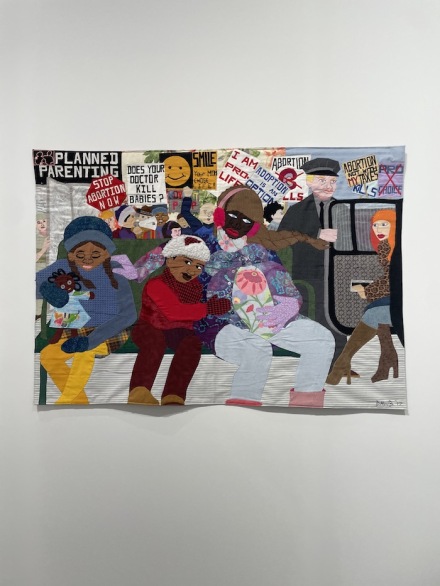
Dawn Williams Boyd, The Right to (My) Life (2017)
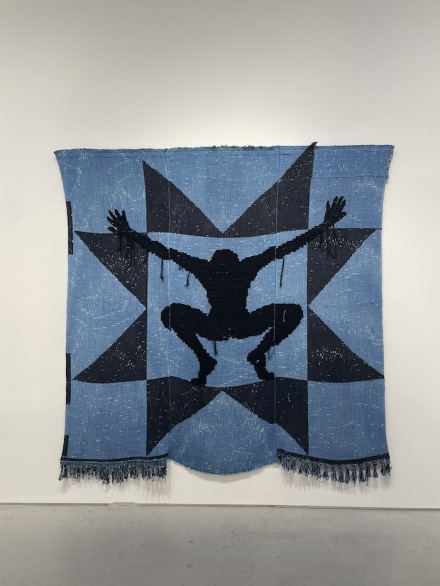
Diedrick Brackens, survival is a shrine, not the small space near the limit of life (2021)
– A. Chisholm
Related Links:
Exhibition Page [Hauser & Wirth]
Gee’s Bend Quiltmakers [Souls Grown Deep Foundation]






